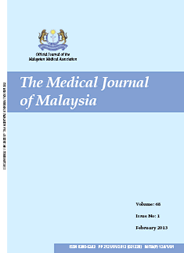MJM, Vol 70 Supplement 1 September 2015
Sampling Design of NHMS 2015
*Institute for Public Health, Ministry of Health Malaysia, **Department of Statistics Malaysia
ABSTRACT
Introduction: The National Health and Morbidity Survey 2015 (NHMS 2015) was a nationally representative household survey of non-institutionalised Malaysian population who were residing in Malaysia for at least 2 weeks prior to data collection.
Objective: The aim of the survey was to provide health related community-based data to support Ministry of Health, Malaysia in reviewing health priorities, programme strategies and activities, and planning for allocation of resources.
Methods: There were sixteen research scopes included in the survey. The sample size was calculated based on the requirement for each scope. A multi-stage stratified sampling was adopted in the survey. The stratification was by states and urban/rural localities. The Primary Sampling Unit (PSU) is Enumeration Block (EBs) based on the information from 2010 Census. A total of 869 EBs were selected from the total EBs in Malaysia, where 535 and 334 EBs were selected from urban and rural areas respectively. The Secondary Sampling Unit (SSU) is Living Quarters (LQs) within the selected EBs. Twelve LQs were randomly selected from each selected EBs. All households within the selected LQs were included in the study. All eligible members in the households were also included in the study.
Conclusion: Implementation of a nation-wide survey using a robust method ensures reliable findings for policy makers.
Keywords: National Health and Morbidity Survey, NHMS, population based survey, survey methodology, sampling method
